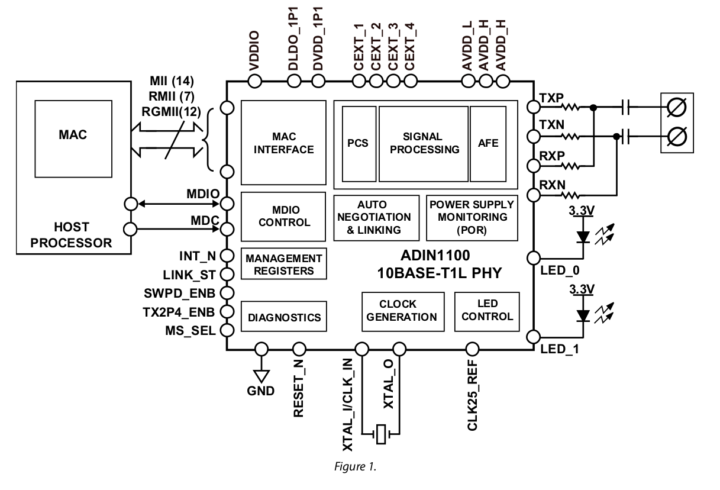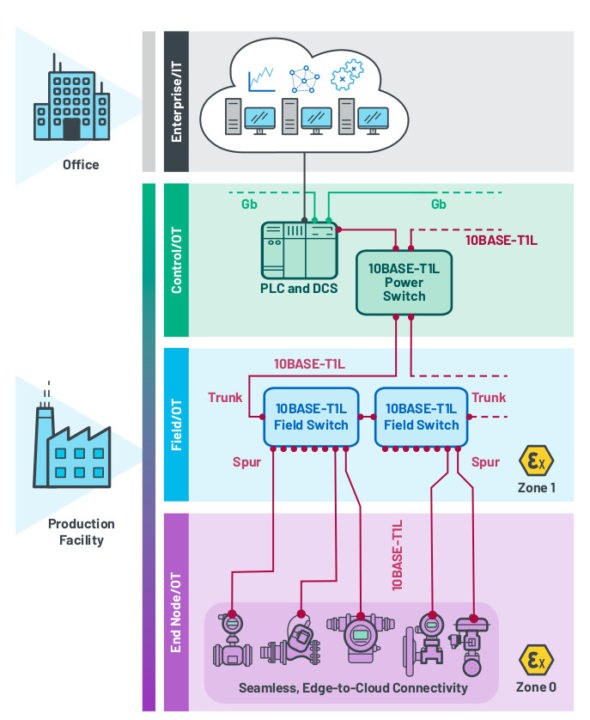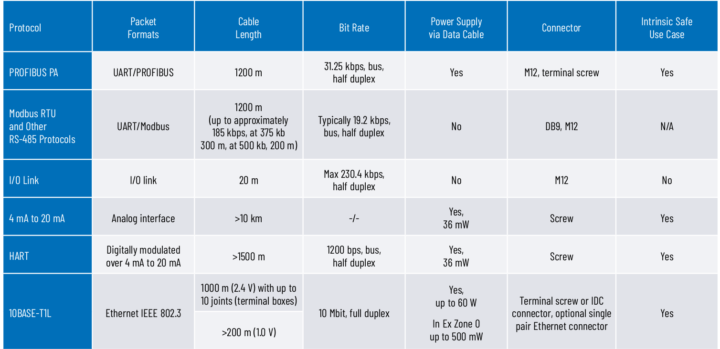The maximum length of Ethernet cables used to be 100 meters. While that may be more than enough for most applications, it does not cut it for industrial communication applications. So the 10BASE-T1L Ethernet physical layer standard (IEEE 802.3cg-2019) was approved by the IEEE on November 7, 2019 to allow for cables over one kilometer using a single twisted-pair cable.
Analog Devices has launched two 10BASE-T1L Ethernet chips with ADIN1100 Ethernet PHY and ADIN1110 Ethernet MAC-PHY that allow for up to 1.7 kilometer long Ethernet cables.
Let’s check out ADIN1100 specifications for reference:
- 10BASE-T1L IEEE Std 802.3cg-2019 compliant
- Cable Reach
- 1700 meters+ with 1.0 V pk-pk
- 1700 meters+ with 2.4 V pk-pk
- Auto-Negotiation capability
- Supports intrinsic safety applications
- MII, RMII & RGMII MAC interfaces
- MDIO Management Interface
- Unmanaged configuration using pin strapping including:
- Master/Slave selection
- Transmit amplitude
- PHY address
- 25 MHz crystal oscillator/25 MHz external clock input (50 MHz external clock for RMII)
- Single supply – 1.8 V/3.3 V operation (mode dependent)
- Power consumption
- Single supply 1 V pk-pk – 45 mW typ
- Dual supply 1 V pk-pk – 39 mW typ
- Single supply 2.4 V pk-pk – 109 mW typ
- Dual supply 2.4 V pk-pk – 81 mW typ
- Triple supply 2.4 V pk-pk – 75 mW typ
- EMC test standards
- IEC 61000-4-4 electrical fast transient (EFT) (±4 kV)
- IEC 61000-4-2 ESD (±8 kV contact discharge)
- IEC 61000-4-2 ESD (±15 kV air discharge)
- IEC 61000-4-6 conducted immunity (10 V)
- EN55032 radiated emissions (Class A)
- 3.3 V/2.5 V/1.8 V MAC interface VDDIO supply
- Integrated power supply monitoring and POR
- Start of packet detection for IEEE 1588 timestamp support
- Diagnostics
- Frame Generator and Checker
- Multiple Loopback Modes
- IEEE Test Mode Support
- Cable Diagnostics
- Link/Activity LED
- Small package 40-lead (6 mm x 6 mm) LFCSP
- Industrial temperature range – -40°C to 105°C

It’s not mentioned in the specifications above, but 10BASE-T1L’s transmission speed is limited to 10 Mbps which is still much faster than the HART and Field Bus protocols typically used for industrial networking.
Another benefit listed in a white paper is that new graduates may never have heard about HART or Field Bus, but all are familiar with Ethernet, and apart from a passive media converter, or a switch with 10BASE-T1L ports is required, nothing needs to be changed. No additional software, no customized TCP/IP
stack, and no special drivers are required for 10BASE-T1L. Some cables used for HART communication can even be reused, and PROFINET, EtherNet/IP, HART/IP, OPC UA, or MODBUS/TCP and IoT protocols such as MQTT can also be used with the new Ethernet standard.

You’ll find more details about the chips on ADIN1100 and ADIN1110 product pages on Analog Devices’ website.
Via ElecronicsWeekly

Jean-Luc started CNX Software in 2010 as a part-time endeavor, before quitting his job as a software engineering manager, and starting to write daily news, and reviews full time later in 2011.
Support CNX Software! Donate via cryptocurrencies, become a Patron on Patreon, or purchase goods on Amazon or Aliexpress






